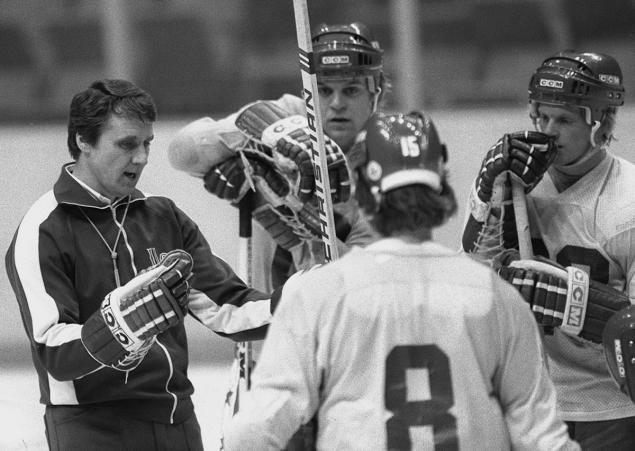In 1979 coach Herb Brooks held the tryouts for the 1980 US Olympic hockey team. After making his player selections, he only had one returning player from the 1976 team. He also selected nine players from University of Minnesota and four players from Boston University, bitter rivals. This was a brand new team with no chemistry between them and a lot of bad blood.

As the leader of the team, Coach Brooks needed to bring all the players together to play as a unit. He started by teaching them all a valuable lesson in teamwork. Each player had to love the team more than themselves. Coach Brooks went to Lake Placid with the youngest team in Olympic history, beat the greatest team in the world (The Soviet Union), and won the gold medal.
How did he do it? Much of the team’s success came from Coach Brooks’ leadership habits. We can use these four leadership habits to take our own teams to greatness.
1. Love your team
You’ve heard it before. “They don’t care how much you know until they know how much you care.” When the leader has a genuine concern for the lives of her followers, they know it. A leader’s love and respect for the team creates a foundation of trust. Without trust, the leader’s influence will only produce results through compliance, but not through commitment. The most effective teams achieve results through a relationship built on trust for the leader.
2. Lead by example
People learn from what they observe. When a leader tells the team how to handle a situation properly and then uses questionable methods to deal with his own situation, trust is eroded. That lack of integrity from the leader produces a lack of respect and trust from the team. Without trust, teams lose faith in the leader and begin to produce only what is necessary to get the job done, nothing more. But, when the leader’s actions and words are in alignment, trust grows, speed increases, and costs go down.
3. Share your vision
Setting the vision for the team is the leader’s responsibility. The leader must see a future that does not currently exist. Then, the leader needs to communicate that potential future to the team with clarity. This means creating a simple structure to the message. People want to follow a leader who knows the destination and has the conviction to take the team there. Moving the team toward that future reality will take influence from the leader.
4. Influence with inspiration
All leaders use influence. Just like the force from Star Wars, influence can be used for either good or evil. Leaders who love their teams, have high integrity, and have built their relationships on a strong sense of trust will positively influence the team toward a better future. People want to be inspired to move, not required to move. Think about the last time you wanted to do something as opposed to being told you have to do something. You know what I’m talking about!
The influence tactics used by leaders can result in conflict, compliance, or commitment. Obviously, leaders want to see commitment from the team, but I’ve seen too many settle for compliance! What I’ve learned is that the most influential leaders use inspiration to produce team commitment.
Coach Herb Brooks may have caught lightning in a bottle in 1980 but it was not by sheer luck. He was a talented leader and a gifted hockey coach. The lessons we can take away will live on with us when we apply them to our own leadership development.
What has a leader done to inspire you?
Perfection is a direction,
Russ
Like what you’re reading? Please share this with your friends.
You know you want to watch the ending, so here’s the link:


Please note: I reserve the right to delete comments that are offensive or off-topic.